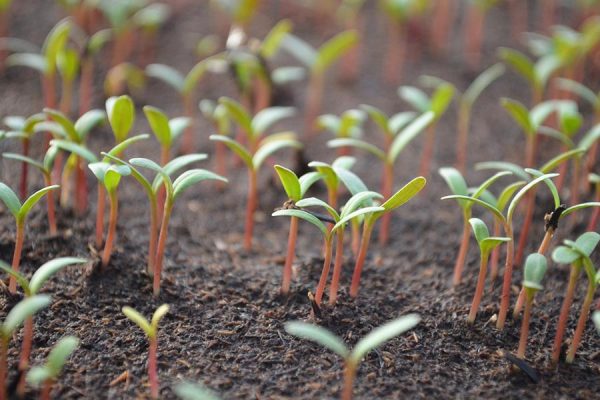
General tips on sowing seeds
Every seed will have particular requirements so do check the packet for specific details. However, here are a few general guidelines to help your seeds get off to the best start.

Water the compost before you sow the seeds
If you’re sowing in pots or seed trays, sit them in a tray of water to allow them drink up all they need, then let them drain before sowing. If you’re direct sowing into the ground, give it a good drenching. Damp soil is ‘stickier’ so more likely to hold on to the seeds than dry soil, and there is less chance of washing seeds away.
The bigger the seed, the deeper you plant it
As a rule of thumb, plant about twice the depth as the seed is wide. If in doubt, it’s better to be too shallow than too deep; you can always top up with compost once the seed has germinated if you need more depth. Some seeds, particularly very fine ones, are better scattered on the top of your compost then lightly covered with a dusting of more.

Tamp down to ensure good soil contact
Once you have planted, apply gentle pressure to the soil to ensure your seeds make good contact with it. They need the moisture and nutrients it will provide to get going, not to mention to anchor roots into so their top growth can shoot upwards.
Most seeds need heat to germinate
There are a few plants – usually wildflowers or domesticated plants bred from wildflowers – which need a good cold spell then warmth before they will germinate. This is a natural mechanism to prevent them growing in a mild December and then being annihilated by a chilly March! However, if you are buying seeds in packets, it is likely that any such preparation will have been done for you. Unless the seed packet says otherwise, heat and light will make your seeds think it’s spring and, therefore, time to get growing.

Provide good drainage and good airflow
Water-logged soil or overly humid conditions are the enemy of seeds and seedlings; they are likely to cause them to rot. If your seeds need water, water but let it drain away so the soil isn’t saturated. If you have covered them to build up some heat, check regularly to ensure condensation isn’t building up.
Find our seed sowing calendars for flowers, vegetables and herbs here.
And we've written about growing broad beans here - will we convince you to try some?


Leave a comment
This site is protected by hCaptcha and the hCaptcha Privacy Policy and Terms of Service apply.